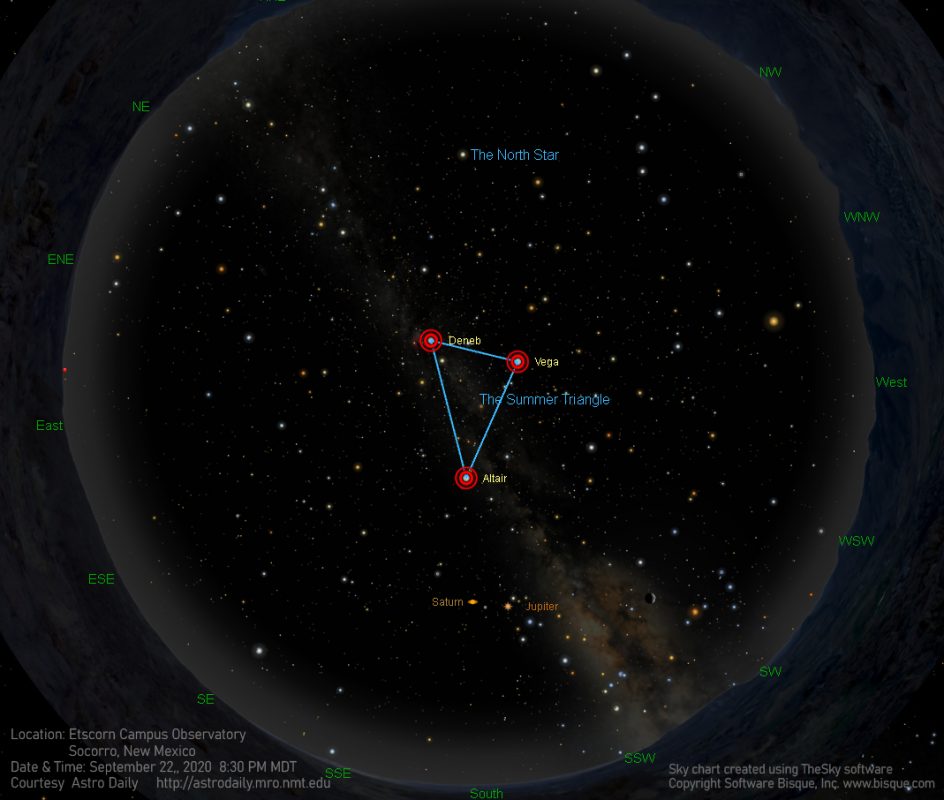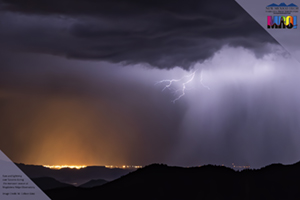Today is the first day of fall, which means it’s the time of year when the Summer Triangle can be seen nearly overhead at astronomical twilight, when the Sun has dropped below the horizon far enough that the sky is no longer illuminated by any sunlight. If you’ve never heard of the constellation of the Summer Triangle, there’s a good reason for that — the Summer Triangle is an asterism rather than a constellation.
Constellations and asterisms are similar in that they both refer to a recognizable pattern of stars visible to the naked-eye. However, a constellation is more; it is an officially recognized designation that refers not only to the pattern of visible stars but to a well-defined area of the sky surrounding those stars. These areas of the sky are designated by the International Astronomical Union (IAU), the recognized authority responsible for assigning designations and names to celestial objects.
The Summer Triangle is made up of the stars Altair, Deneb, and Vega, the brightest stars in the constellations Aquila, Cygnus, and Lyra respectively. The Milky Way runs through the Summer Triangle, and appears brightest when it is overhead, about an hour-and-a-half after sunset at this time of year.

After you’ve located the Summer Triangle, see if you can find the planets Jupiter and Saturn to the south. Jupiter, which will be about 30°above the SSW horizon should be easy to pick out, since it’s the brightest object in that area of the sky. You can find Saturn about 8° to the left of Jupiter. For a reminder of how to measure distances in the sky using nothing but your own hands, check out this previous blog post.
Happy Autumnal Equinox!
M. Colleen Gino, MRO Assistant Director of Outreach and Communications
